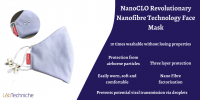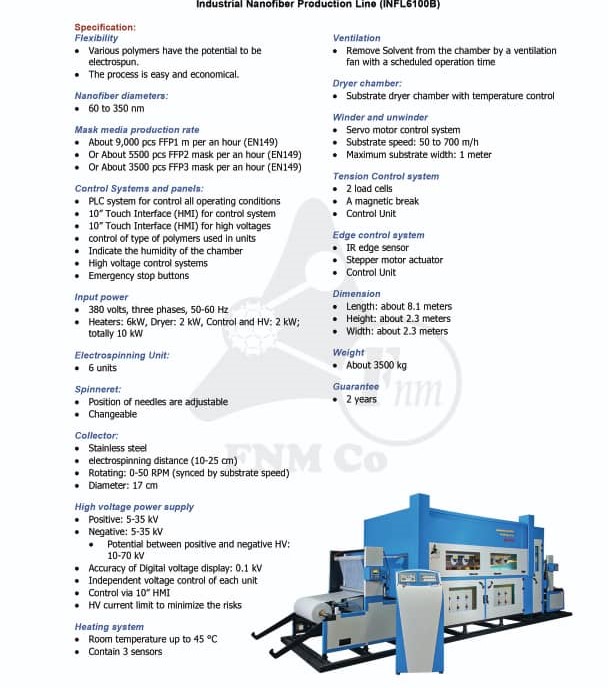Description
Electrospinning is An established method of producing nano- and micro-fibers from a wide variety of natural and synthetic polymers is knows as Electrospinning
Our industrial blown electrospinning machine is not a good option for R&D. This machine is for mass production, with buyers around the world to keep up with the pandemic demand for N95 face masks.
Our manufacturing system has a high production rate, this, of course, is depending on polymer solution and electrospinning parameters.
But for a quantity to compare it is to: about 100 g/hr for PA.
For a research and development pilot machine better to supply INFL260B. This machine has 2 units, 8 blown needles, production of about 16 g of PA nanofibers per hour, 60 cm maximum electrospinning width, roll to roll system with magnetic brake and edge control system, ready to connect humidity control system.
For the production of N95 media for respiratory face mask the coating speed is 40 meters per unit in an hour. (INFL6100B: 240 meters / hr; INFL260B: 80 meters per hour).
Industrial Nanofibre Production line is a polymeric/ceramic Nanofibre producing machine on the industrial scale
What is Electrospinning?
Electrospinning is a process for the production of nanofibers and microfibers from solutions of polymeric materials, ceramics or composite solutions consisting of polymer-nanoparticles as well as molten materials. The idea was first proposed by Zeleny, then patented by Formahals in 1934, and rebuilt in 1990 by Dr. Reneker. In the electrospinning method, both melt and polymer solutions can be used. Electrospinning is also called electrostatic spinning or electrospinning. This method is also used to produce nanoparticles through the electrospray process.
The electrospinning method uses a high voltage power supply to generate an electric charge in the flow of the polymer solution or melt. In order to produce nanofibers, one of the high voltage power supply electrodes is connected to the polymer solution and the other electrode is connected to ground or to a conductive collector. As the solution passes through the capillary tube, due to the electric field generated by the high voltage power supply between the tip of the capillary tube and the collector connected to ground, fluid is charged and drawn from the tip of the capillary tube to the collector. Due to the movement of the fluid, the solvent evaporates and filaments with a diameter of less than a micron are produced on the collector. Due to the interaction of electric forces, the surface charge of the fluid flow, viscoelastic force and also surface tension, spiral motion is induced in the charged fluid and as a result, the produced nanofibers are produced as an interconnected or non-woven layer.








